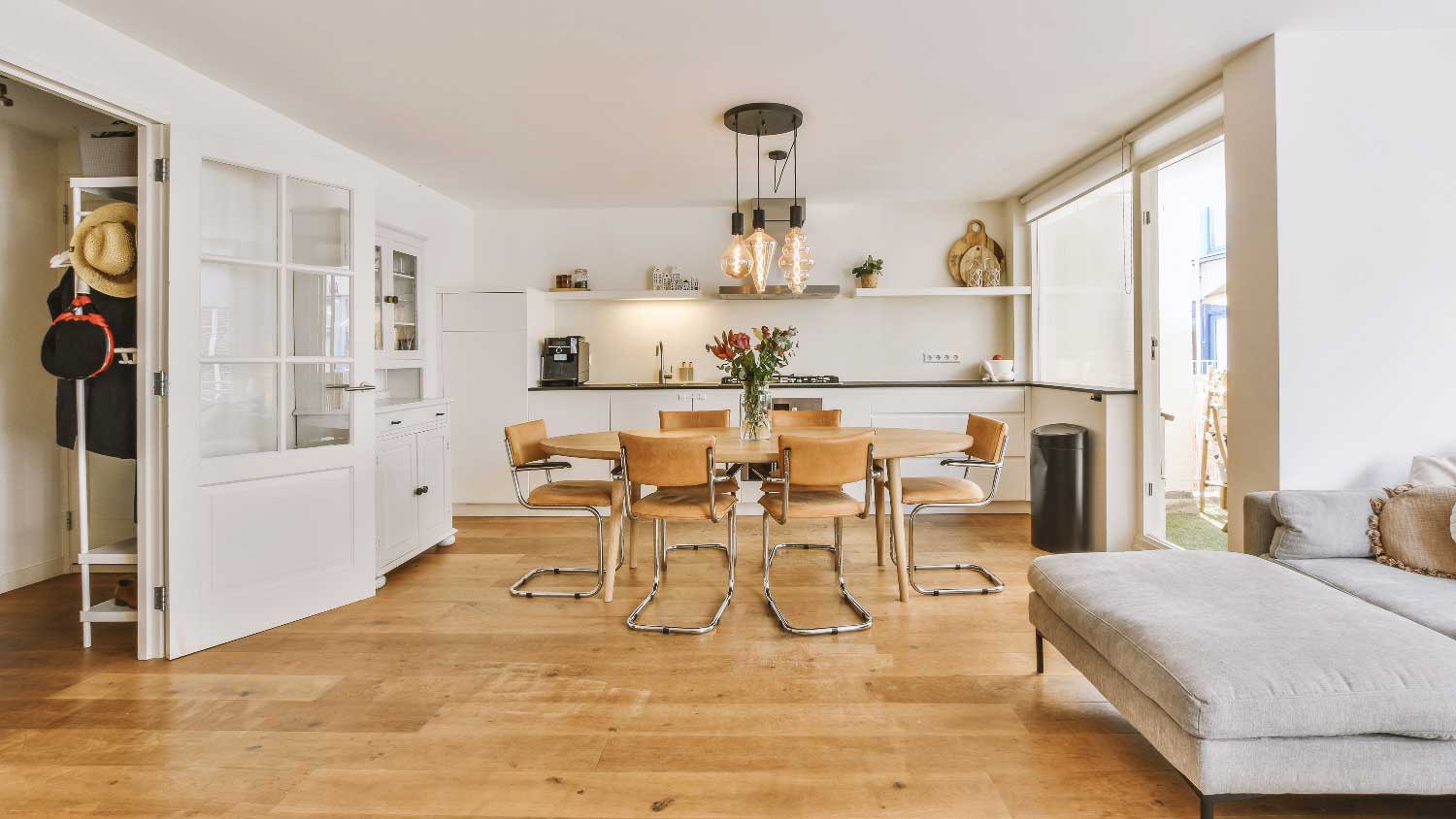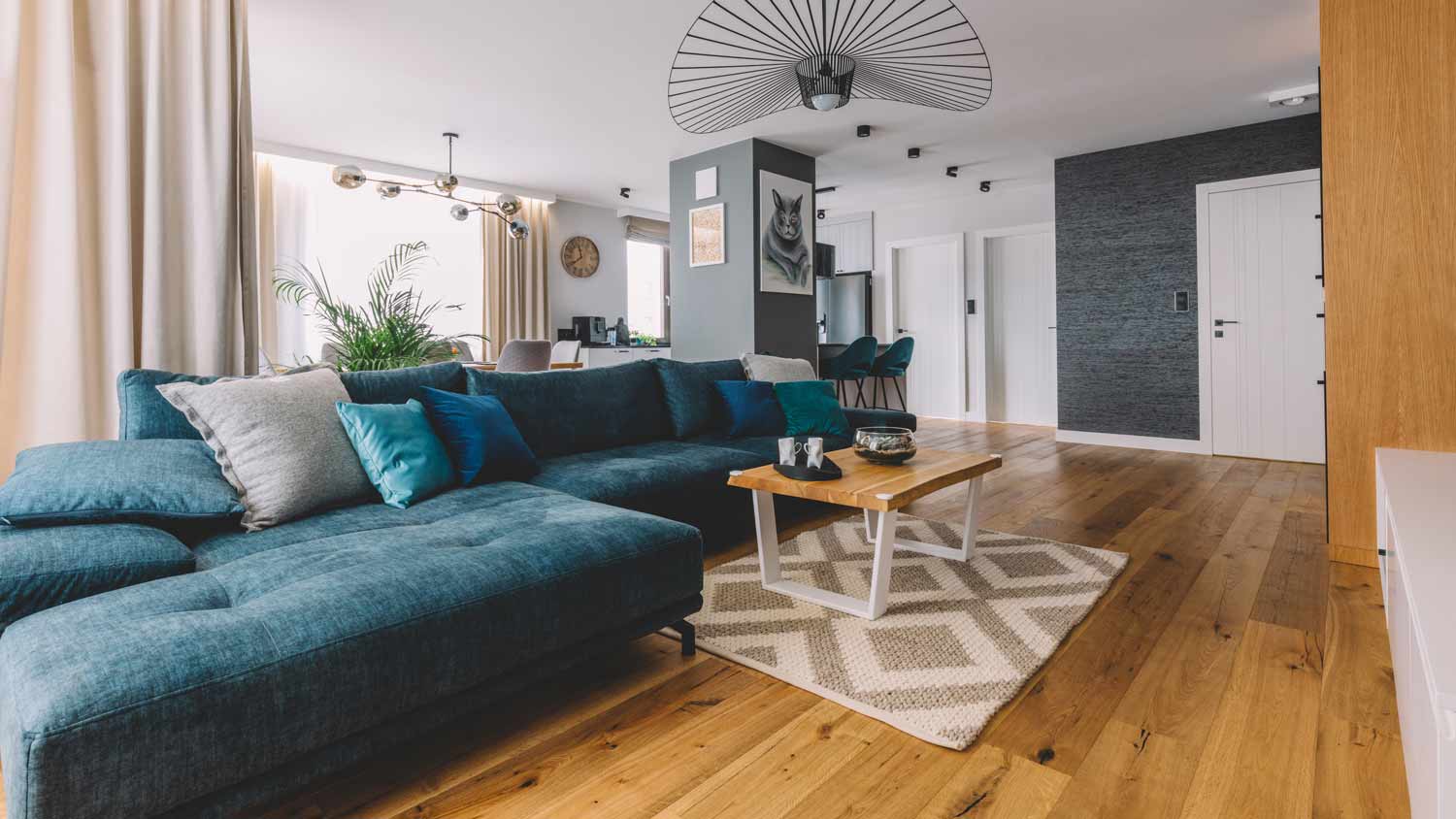Why Is My Floor Uneven? 8 Reasons for a Sloped Floor
Don’t feel unbalanced by your uneven floor
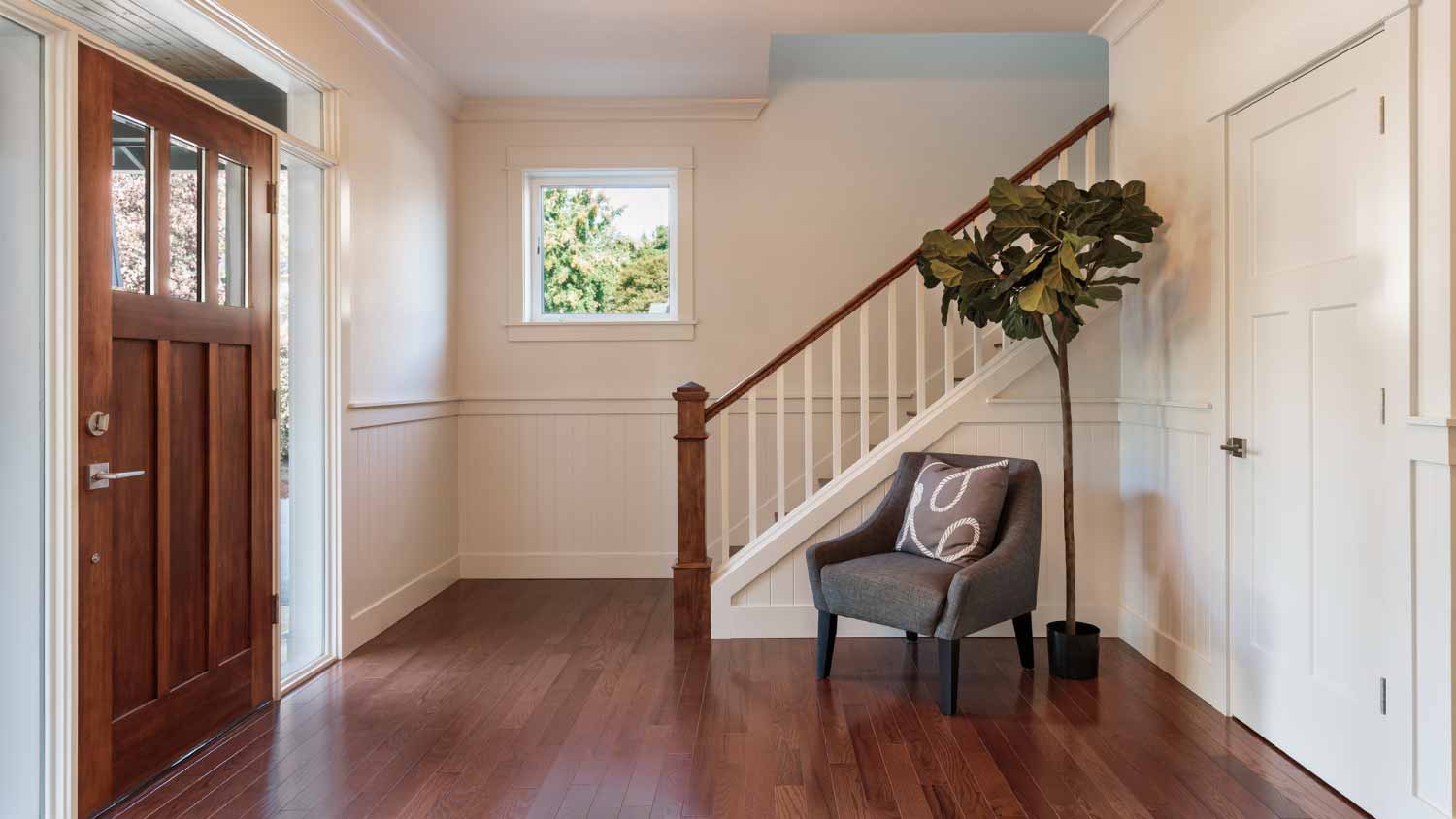

Foundation issues, water damage, poor construction practices, or structural issues usually cause uneven floors.
Other potential causes include tree roots putting pressure on the foundation walls and earthquake damage.
Major foundation or structural issues require a professional to diagnose and repair them.
Uneven floors in a home can make you feel off-balance and unsettled. They can also signal some pretty serious issues with your home’s structure. If you’re wondering, “Why is my floor uneven?” this guide will help you diagnose the problem and determine the proper fix.
1. Foundation Problems
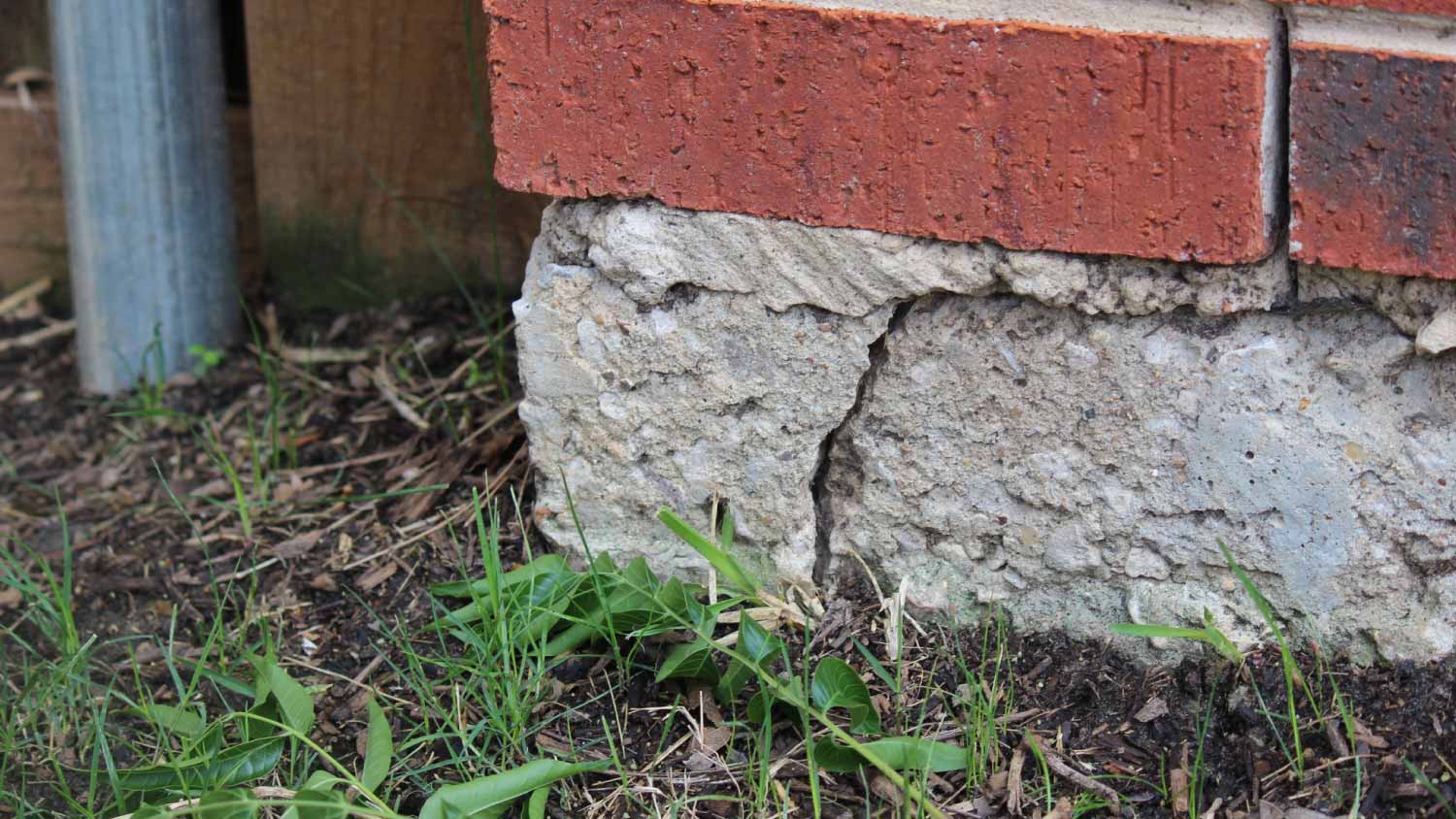
All house foundations settle over time, though most houses settle uniformly. However, some houses experience differential settling, where one area settles more than the others, causing sinking. This can cause structural damage, including uneven floors, that can be expensive to repair.
The Solution
A local foundation repair pro can diagnose and repair your home’s foundation problems. Professional foundation repair costs around $2,220 to $8,110, though repairing a settling foundation can cost as much as $25,000.
2. Pooling Water
If your yard slopes toward your home’s foundation rather than away from it, water can pool and seep inside the foundation. In turn, this can make the floors in the home uneven.
The Solution
You’ll need to have your yard regraded if it’s directing water to your foundation rather than away from it. The average cost to level a yard is $2,180, though the exact cost ranges between $1,020 and $3,340.
3. Leaky Basement
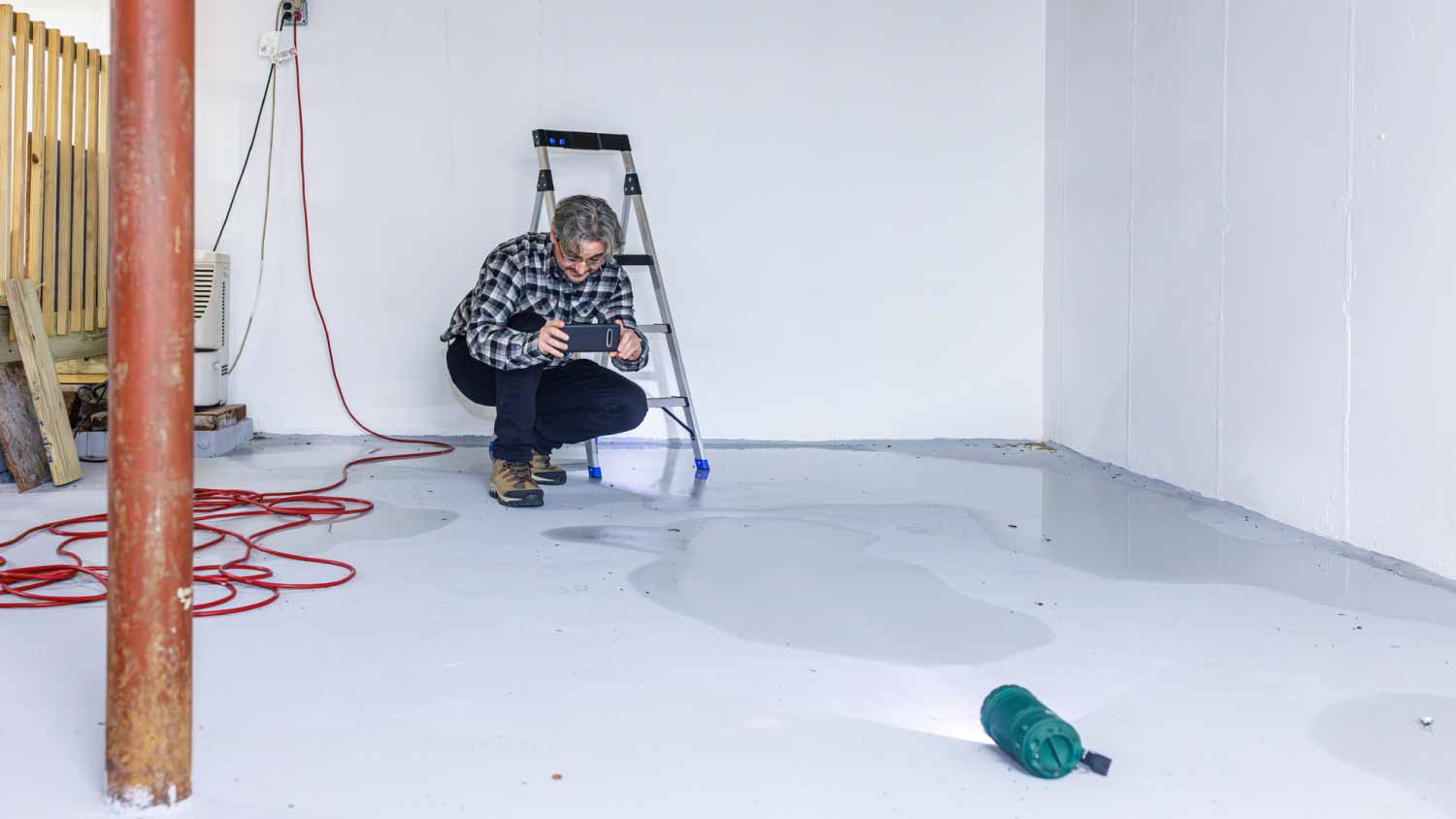
If your basement leaks whenever it rains, it could be causing your floors to be uneven. Common signs of a leaky basement include puddles on the floor, water spots, mineral deposits, musty smells, and cracks in the basement walls.
The Solution
Look into basement waterproofing. During this process, a pro will seal any cracks and may apply a water-resistant sealant to your basement walls. Waterproofing a basement costs between $3 and $10 per square foot.
4. Damaged Floor Joists or Subfloor
Floor joists are beams that support your floor from underneath, while a subfloor is the concrete or wood base on which your flooring material of choice is installed. If either is damaged, your floor can become uneven. Joists and subfloors can wear out over time and are prone to rot and insect infestations.
The Solution
If your joists or subfloor are damaged, they must be repaired or replaced. You can fix a minor issue yourself with the right tools and confidence in your DIY skills. Otherwise, hire a local floor repair company to complete the work. The cost to replace subflooring runs from $900 to $3,000.
5. Poor Construction
When contractors build homes, they must ensure the ground is stable enough to support the structure. If they don’t properly tamp down the soil beneath the house, it can cause the home to shift over time. This poor construction practice can result in uneven floors.
The Solution
Adding soil around the foundation will help to drain water away from the structure and prevent further shifting. Check that your gutters are in good shape and your downspouts are directing water away from your home.
6. Structural Problems
Major structural issues can cause uneven floors. Structural problems can be caused by improper construction, advanced home age, water damage, or pest damage. Other signs of structural damage include cracks in the foundation or walls, sticking floors and windows, peeling or bubbling paint, and a leaking roof.
The Solution
Contact a structural engineer to address structural issues as soon as you notice them. A pro will inspect your home and determine the cause of the structural problem so they can recommend the proper repair. Hiring a structural engineer costs between $340 and 780.
7. Tree Roots
Trees that are planted close to your foundation can become a problem once their roots grow large enough to reach your foundation. Once they get there, tree roots can start pushing on your foundation walls, causing instability and uneven floors inside the home.
The Solution
Plant trees at least 20 feet from your home to prevent the roots from reaching your foundation. If you already have a large tree close to your house, consider having it cut down and grinding the stump to prevent further growth.
8. Earthquake Damage
If you live in a region prone to seismic activity, your home may sustain damage that can cause uneven floors. If your floors look uneven following an earthquake, the cause of the issue is clear.
The Solution
Consider a seismic retrofit to reinforce your home to withstand earthquake activity better. Earthquake retrofitting is worth it if you live close to a fault line and experience frequent earth-shaking activity.
When to Call a Pro
While some problems, like a slightly damaged subfloor, can be repaired by a handy homeowner with the right tools, most issues that cause uneven floors should be repaired by a professional.
Foundation repairs and basement waterproofing are labor-intensive jobs that must be done correctly to prevent further damage. Although you might want to avoid paying a pro to complete this work, you’ll pay a lot more for major foundation repairs if you ignore the issue or attempt a DIY fix that exacerbates the problem.
Frequently Asked Questions
Uneven floors often signal structural issues in a home, so taking them seriously is vital. If you buy an older home with slightly uneven floors, check that your inspector thoroughly inspects the foundation to catch any potential issues early. And if you notice that your floors are becoming more uneven over time, call a pro to check your foundation ASAP.
Houses naturally settle over time, but they should settle uniformly with no apparent settling in one spot. If your floor is uneven but only in a particular area of your home, differential settlement could be the problem. This can be caused by improper drainage, erosion, expanding soil, earthquake activity, or poor construction techniques.

.jpg?impolicy=leadImage)


